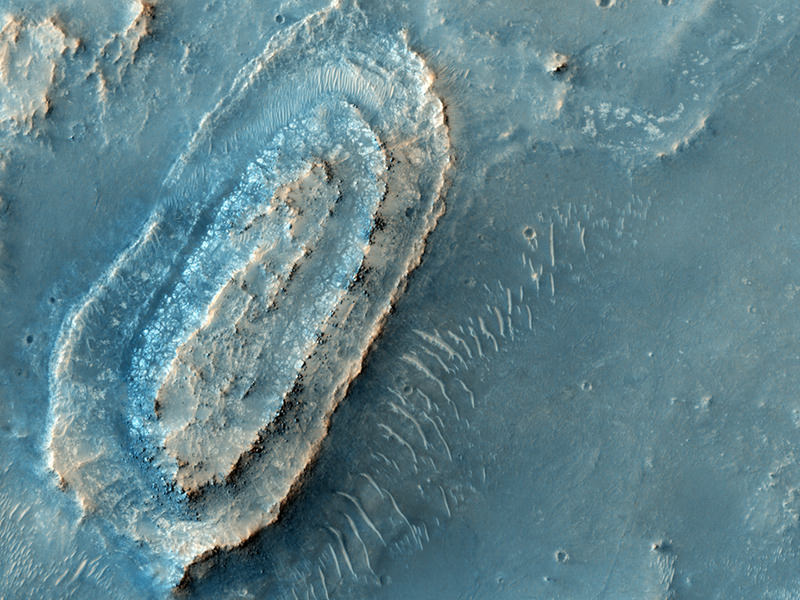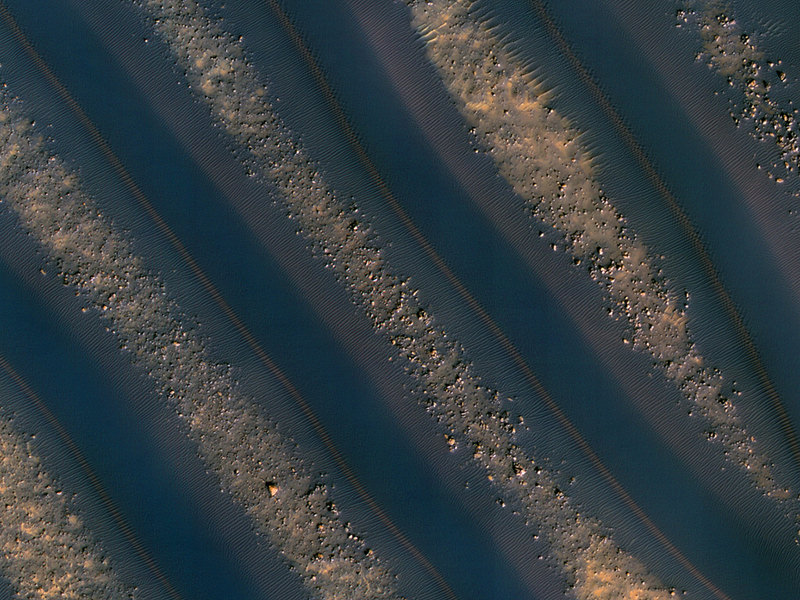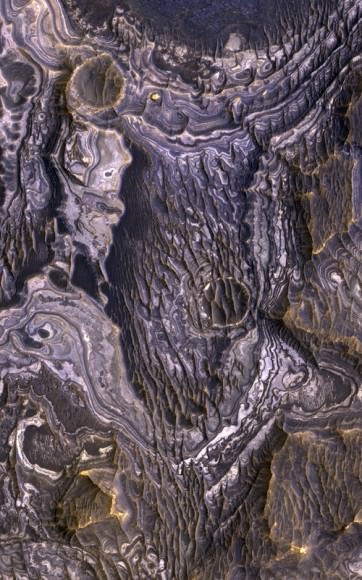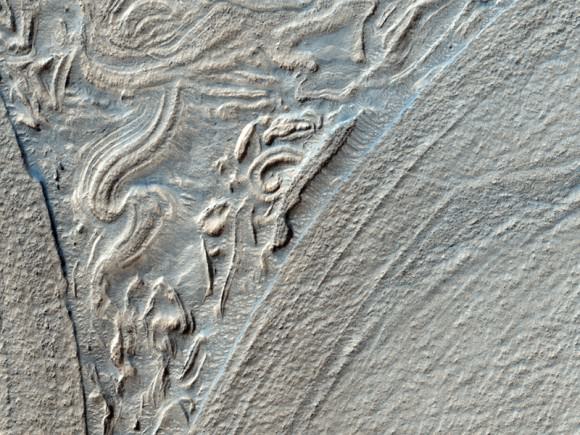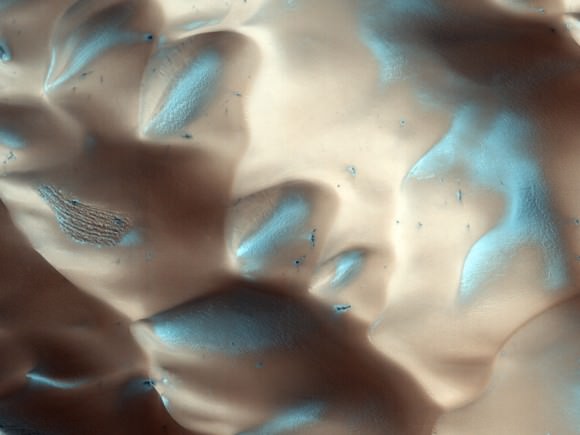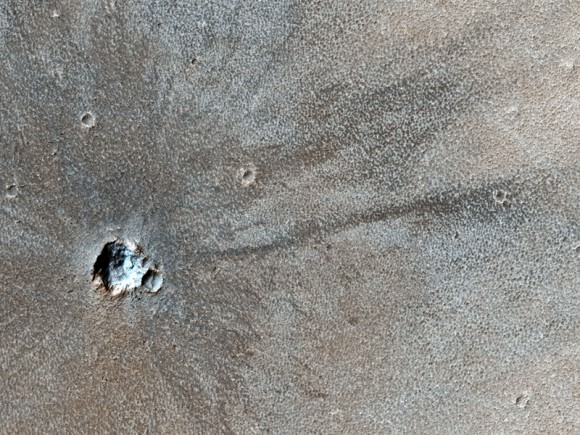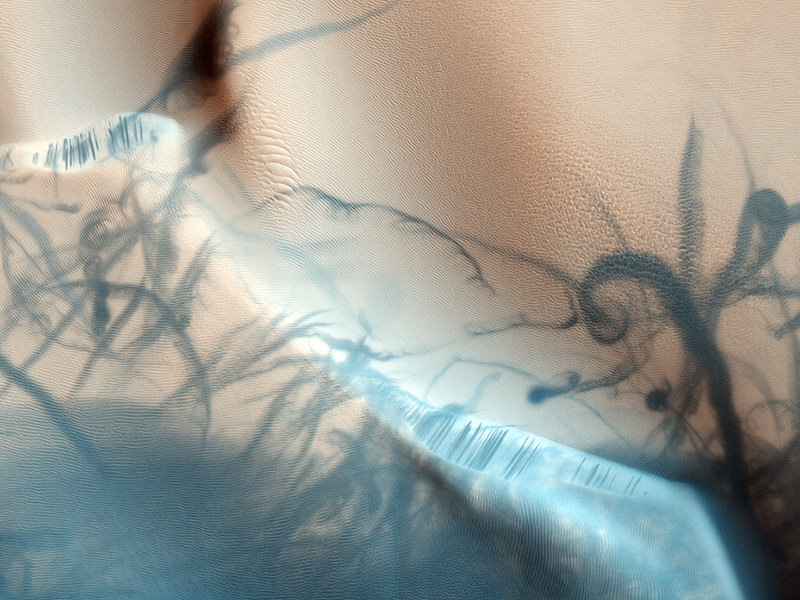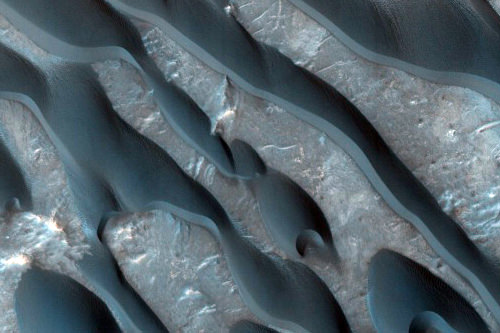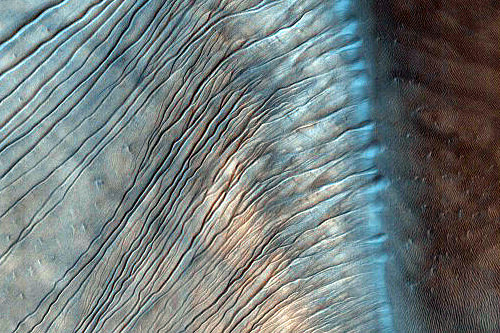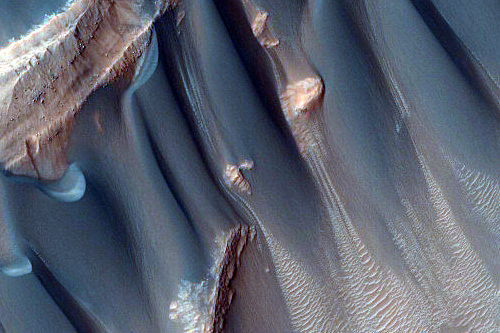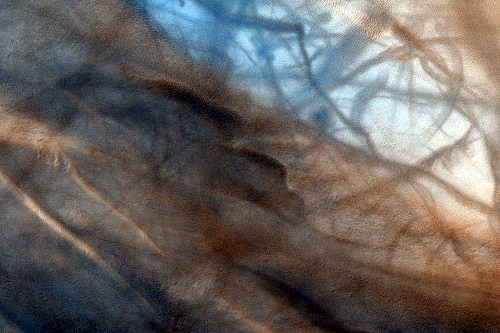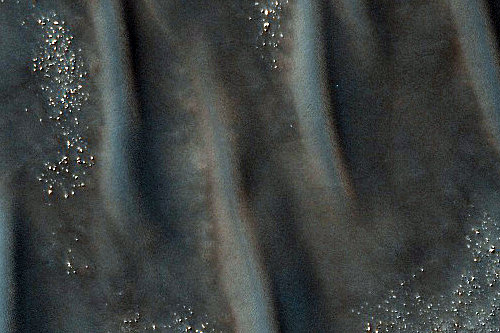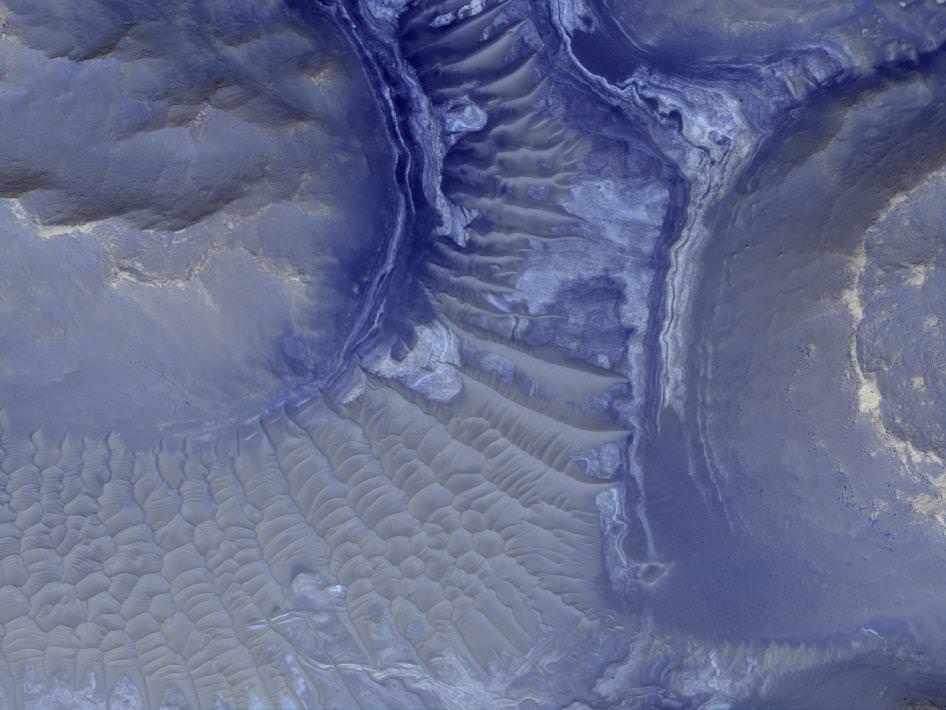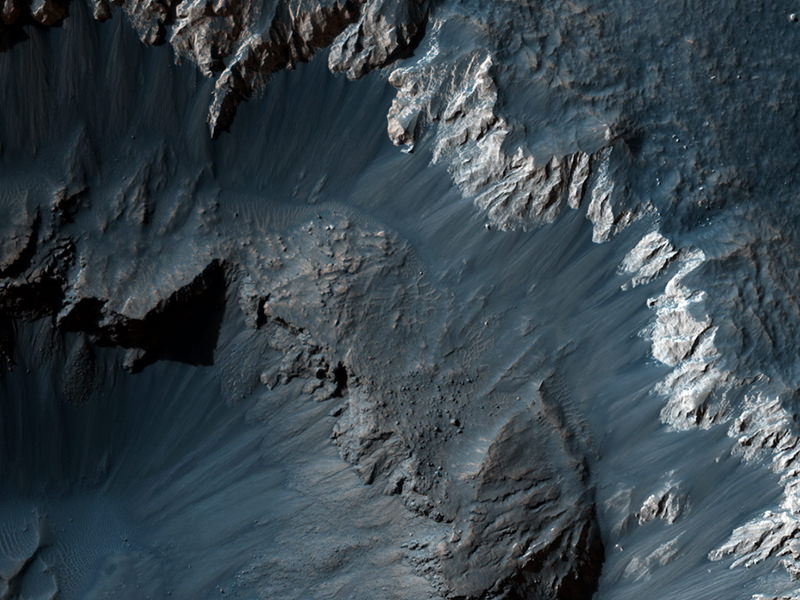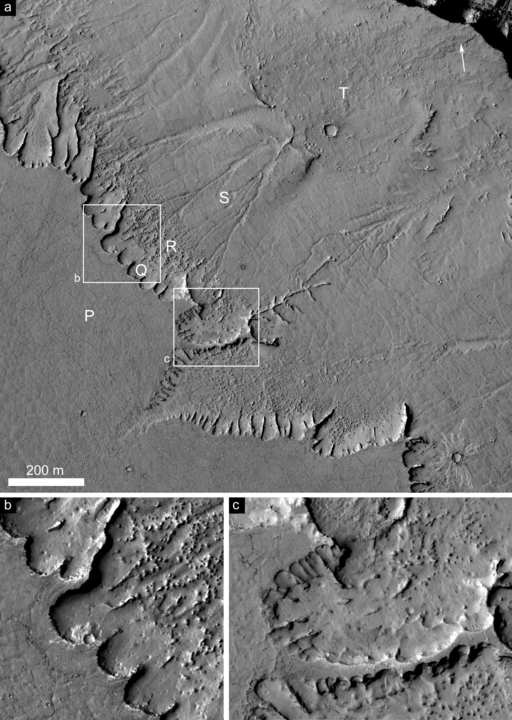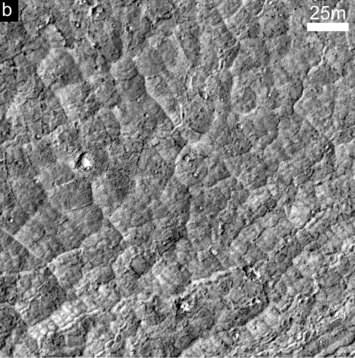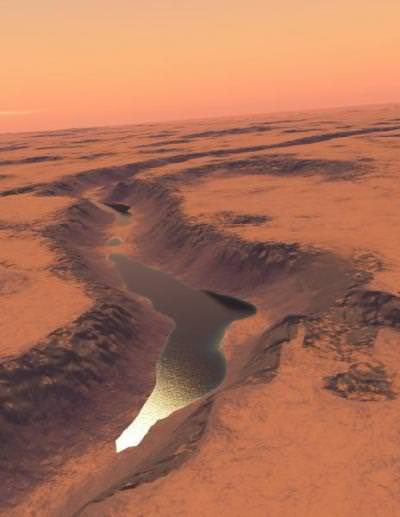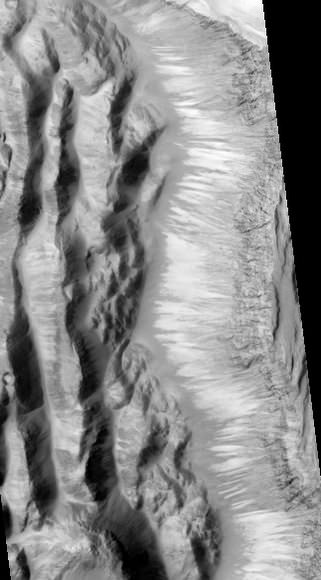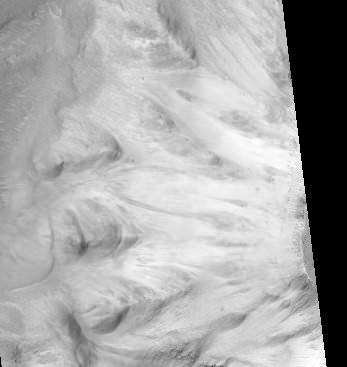[/caption]
Remember the amazing image of an avalanche on Mars back in 2008, captured by the HiRISE camera on the Mars Reconnaissance Orbiter? Bernhard Braun from UnmannedSpaceflight.com has now created several different 3-D views of the event, providing never-seen-before, ground-level observations by using special software he developed that can create three dimensional images from one 2-dimensional picture. Normally, to create a 3-D image you need at least two images, or you have to combine images with data from an instrument such as a laser altimeter. But Braun’s single-image photoclinometric 3D reconstruction algorithm, also known as “shape from shading” allows the shape of three dimensional objects to be recovered from shading in a two-dimensional image. Braun told Universe Today that since developing the software, one of the areas he has wanted to “visit from the ground” is the famous dust avalanche caught live in action by HiRISE. His images provide an entirely new — and stunning — view of Mars.
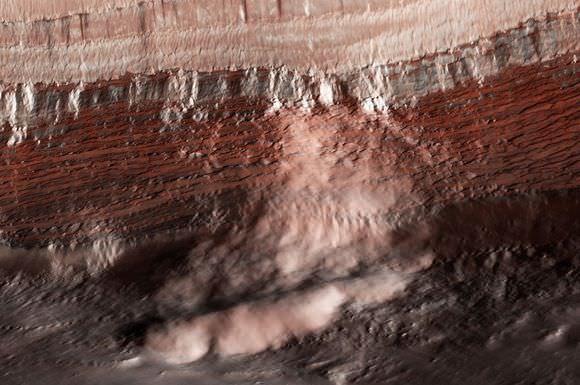
Braun said that the software is useful to look at various areas of interest, in particular where we have no other (i.e stereo-imaging based) detailed 3D reconstructions yet. Previously, we’ve shown 3-D movies on Universe Today that Doug Ellision and others from UnmannedSpaceflight.com have created from HiRISE DEMs (Digitial Elevation Models) which are a grid, or raster file describing elevation values at regularly spaced points, or posts. HiRISE DEMs are made from two high-resolution images of the same area, taken from different look angles by the spacecraft. The HiRISE folks say that creating a DEM is complicated and involves sophisticated software and a lot of time, both computing time and man-hours.
But Braun’s software (although it took him quite some time to develop) allows for a moderate processing time, about 15 minutes per medium-resolution image, using about 2 gigabytes of memory. Also, no texturing or additional coloring/shading was applied when rendering the surface, and every detail visible is real 3D down to the pixel-level.
But, Braun doesn’t think his method is in any way “superior” to the HiRISE team’s efforts.
“Quite to the contrary,” he told me via email. “Traditionally, single-image shape-from-shading methods like the one that I developed, are considered to nicely complement the multi-image (stereo) methods because the weaknesses of one method (large scale distortions in single-image-methods vs. less detail resolution in multi-image methods ) is the strength of the other. Also, the official HiRISE DEMs are generally more accurate at exactly reproducing absolute terrain heights (also using altimeter-based calibration), which is important for scientific usage, whereas my DEMs are less well calibrated because they are mainly intended for visualization purposes.”
The main advantage of the single-image method is that it can be used on almost arbitrary images of areas where there isn’t 3D coverage yet, such as capturing an event like an avalanche.
“In a way, it opens the door to an entirely new view of large existing 2D-only data sets, Braun said. “For example, currently I am working on an extension of the method to radar images for hi-resolution 3D reconstructions of the highest-resolution Venus Magellan data sets.”
Braun’s software method could be considered more of an art form.
“I view my software and algorithms not so much as a scientific measuring instrument,” Braun told me in an email, “but more as a tool for visualization that leaves a bit of artistic license, a degree in freedom of interpretation i.e. the means for creating atmospheric images and it is those images that are the real “publishable end product” of the whole process. The algorithms and software are just the ‘painters brush and easel’ or the photographer’s virtual camera so to speak.”
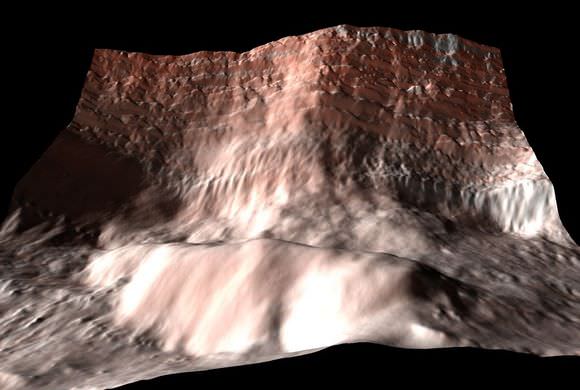
Emily Lakdawalla did a wonderful job of explaining the whys and hows of the entire process in the Planetary Society Blog: (go there if you’d like a more detailed description) “Imagine a crumpled piece of paper lit by a spotlight. Facets of the crumpled paper that are perpendicular to the spotlight will appear brightest; facets tilted away from the spotlight will appear dark. If you assume that everything in the picture reflects light in the same way, then you can tell by its albedo, or brightness, whether it is tilted toward or away from the light source. ”

Above is the original image from HiRISE. When looking at these images, remember that this particular scarp on Mars is a high cliff over 700 m (2300 ft) tall and slopes at over 60 degrees. A mixture of ice, rock and dust can be seen, frozen in time, as it is plummeting down the slope, ejecting a plume of dust as the debris begins to settle on the gentle slope at the bottom of the cliff. The ejected cloud is approximately 180 meters across and extends about 190 meters beyond the base of the cliff.
Braun told us he is working on some new images which we hope to be able to share with you soon, and we extend our thanks to him for allowing us to post the avalanche images on Universe Today.
Follow this link to look at Braun’s entire gallery of wonderful color 3D renderings of the avalanche, derived from the originally published HiRISE image, rendered under various viewing positions and light source directions.


